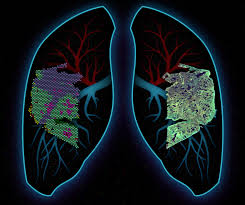Leishmaniasis is a parasitic disease caused by protozoan parasites of the genus Leishmania. These parasites are transmitted through the bites of infected female sand flies. Leishmaniasis exists in two forms – Visceral Leishmaniasis (VL) and Cutaneous Leishmaniasis (CL). VL affects internal organs like the spleen, liver etc and is fatal if left untreated. CL manifests as skin sores or lesions. In this article, we will discuss the various treatment options available for Leishmaniasis.
Drug Therapy
Drug therapy is the mainstay of Leishmaniasis Treatment. The choice of drug depends on the infecting species and the form of the disease. For VL, the first-line treatment involves antimonial drugs like Sodium Stibogluconate (SSG) or Meglumine Antimoniate. These drugs are usually administered intravenously or intramuscularly for 21 days. However, resistance to antimonials is increasing.
For antimonial unresponsive/resistant cases, thesecond line drugs include Amphotericin B lipid formulations or oral medications like Miltefosine. The lipid formulations are given intravenously over 5-10 days. Miltefosine is taken orally for 28 days. It has the advantage of being oral but can have significant side effects.
For CL, the first line treatment involves intramuscular or intra-lesional injections of antimonials like SSG. Other topical treatments used for CL include Paromomycin and Pentamidine ointments. These are applied directly to the lesion 2-3 times a day for 2-6 weeks. CL caused by some species may require systemic therapy with drugs like Miltefosine.
Recent Options
Newer oral drug options that are available and offer advantages over existing treatments include:
– Oral Amphotericin B: This has similar efficacy to SSG with the advantage of being oral. The complete treatment course takes 4-6 weeks.
– Sitamaquine: An oral drug that can be given as a single dose for VL caused by L.donovani. However, it is still not widely available.
– Fexinidazole: A new oral drug developed specifically for HAT (Human African Trypanosomiasis) that shows promise for VL as well. It has a short and easy treatment regimen.
Alternative Therapies
For inadequate response to conventional drugs, some alternative therapies are also tried:
– Combination Therapy: Using two or more drugs together, for eg. Paromomycin + SSG for VL. This reduces resistance and relapse rates.
– Local Therapy: Intralesional or cryotherapy for CL lesions involving local injection of drugs or freezing of lesions. Reported success rates vary between 40-90%.
– Local Immunotherapy: Injecting immune stimulants like BCG vaccine around CL lesions which induces stronger localized immune responses helping lesion healing.
– Photodynamic Therapy: Applying photosensitizing chemicals to skin lesions followed by exposure to visible light which produces reactive oxygen killing the parasites. Initial results are encouraging but more studies are needed.
Complementary Approaches
Along with medical management, certain complementary approaches may help in Leishmaniasis recovery:
– Nutritional Support: A balanced diet high in antioxidants aids the body’s immune response against the infection.
– Stress Management: Techniques like yoga, meditation etc help in reducing stress levels affecting immunity.
– Physical Therapy: Exercises like walking aid blood circulation beneficial to treatment areas.
– Herbal Remedies: Plants with anti-inflammatory or immune boosting properties are sometimes used as adjuvants but their efficacy needs more research.
– Home Remedies: Applying turmeric or neem paste over CL lesions is a common home remedy but its usefulness is still unclear.
– Wound Care: Keeping lesions clean and dressed helps prevent secondary infections and aid natural healing.
In this article, we discussed in detail the various treatment options available for Leishmaniasis including mainstream drug therapies, newer medications, alternative therapies as well as some complementary approaches. While drugs continue to remain the mainstay, research into better and newer drugs especially oral options continues. Combination therapies also hold promise. Complementary therapies augment medical management, but more evidence is needed to establish their efficacy.



